Ms Claudia Daut - Preparation and characterization of capacitive field effect sensors with YSZ dielectric stack
Host: Laboratory of Solid State Physics, Riga, Latvia [23th of June - 08th of July, 2018]
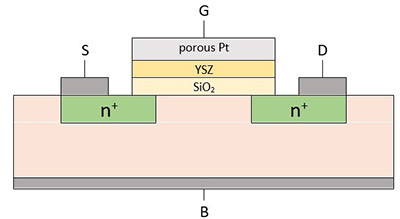
Figure 1: Schematic of a GasFET structure with a porous platinum layer as Catalyst and an additional layer of YSZ as oxygen ion-conductor
The pollution of air in industrialized and developing countries is a serious health problem. One approach to detect air pollution are gas sensitive field effect transistors (GasFETs) - inexpensive, highly sensitive and small devices that could be used for development of handheld/miniature devices with possible scalability to mass environmental monitoring. However, the selectivity is a big issue. One promising method for improving selectivity is gate bias cycled operation (GBCO) [1]. We started the investigation, whether the effect of GBCO can be improved by adding an ion-conductor layer to the gate stack.
During the STSM, ion-conducting yttrium-doped zirconium dioxide (YSZ) layers have been deposited on GasFET gates by magnetron sputtering (Fig.1).
For deposition a segmented target made of a metallic yttrium ring mounted on a ZrO2 disc has been used. Layers with 20, 30 and 50 nm thickness (measured by profilometer) have been deposited and characterized. The stoichiometry was measured by EDX, showing a ratio between Y and ZrO2 of 11.5 %. The deposition of different thicknesses will allow us in further investigations to verify optimal parameters for the gate stack.
The STSM has initiated future work on the improvement of the GasFET sensors. As a follow up to the STSM, the processing of GasFET samples using the deposited films will be done at Linköping University by Dr Mike Andersson and the impact of the YSZ on the GBCO will be measured at the Lab for Measurement Technology under supervision of Dr Tilman Sauerwald.
[1] Bur, C. (2015). Selectivity Enhancement of Gas Sensitive Field Effect Transistors by Dynamic Operation (Ph dissertation). Linköping University Electronic Press / Shaker Verlag, Linköping, Sweden / Aachen, Germany. https://doi.org/10.3384/diss.diva-114670
__________________________________________________________________________________________________________________________________
Dr. Mersiha Suljkanović - Optimization of voltammetric procedures for metal ion determination
Host: Dr Malgorzata Grabarczyk and Dr Cecylia Wardak, Maria Curie Sklodowska University, Lublin, Poland [02nd - 13th of July, 2018]
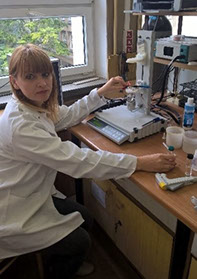
First part of the STSM was based on optimization of parameters for voltammetric determination of V(V), using Pb-film electrode and investigation of matrix influence during the measurements. Investigation of different working electrodes to replace the hanging mercury drop electrode (HMDE) due to its toxicity is very significant. The importance of V(V) determination lies in its wide distribution in the earth’s crust: at trace amounts it is an essential element but can be toxic at higher concentration (accumulates in body tissues such as liver, kidney and bone). In the voltammetric procedure, we managed to use successfully Pb-film electrode for V(V) determination. Influence of interferences: nonionic, anionic or cationic surfactants, humic acids, fulvic acids was also examined, as well as the possibility of their removal (application of Resins: Amberlite XAD-2 and Amberlite XAD-16).
Second part of the STSM was based on preparation of ion-selective electrodes with solid contact (SCISEs) and determination of their analytical parameters (detection limit, measuring range, characteristic slope, response time, optimal pH range) through potentiometric measurements, which also included study of: electrode selectivity (in relation to interfering ions), potential stability and also their reversibility. We prepared ion-selective electrodes sensitive to Cu2+ and NO3- ions: importance of nitrate determination lies in their toxic and carcinogenic effects on humans and animals and their presence in the environment (mainly in ground and surface water) and copper determination is also important from health aspect, due to their highly toxic effects (at high concentrations), but also an essential element for human life which deficiency affects human health. During the experiments we prepared two kind of SCISEs using diferent internal electrodes: silver/silver chloride electrode (Ag/AgCl) and glassy carbon electrode (GC). Influence of ionic liquids added to the membrane phase of prepared electrodes reflected on their properties in terms of sensitivity, potential stability and reversibility, for both type of ion-selective electrodes.
Overall STSM experience was very valuable for my professional development since I gain some practical skills related to voltammetric and potentiometric techniques. Furthermore, the obtained results provided some new insights related to V(V) determination using Pb-film electrode and also highlight the influence of ionic liquid addition in membrane composition during preparation of ISE for copper and nitrate determination.
__________________________________________________________________________________________________________________________________
Ms Camilia Rubio - Real-Time and in situ analysis of total antioxidant capacity
Host: Dr Hadar Ben-Yoav, Ben-Gurion University of the Negev, Israel [22nd - 29th of July, 2018]
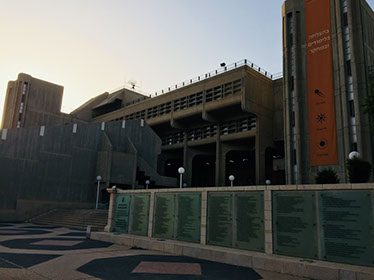
The STSM of PhD student C. Peres-Rubio (CPR) took place at Department of Biomedical Engineering, Ben-Gurion University of the Negev, Israel, 22 -29th of July, 2018, under supervision by Dr. Hadar Ben-Yoav, principal researcher of the Nano bioelectronics Laboratory.
The objective of this STSM was to validate a novel analytical device based on an “intelligent multi-electrode array” for real-time and point-of-care testing of oxidative stress. For this, CPR set-up spectrophotometric assays for total antioxidant capacity and total oxidant status in the hosting laboratory in order to use them as a reference method for the electrochemical lab-on-a-chip developed by Ms Anat Friedman, a MSc student in Dr Ben-Yoav’s team.
Overall, the stay was very fruitful in terms of new contacts, increased knowledge, and new data generation, and as such a research article with the results obtained during this STSM is being drafted. Furthermore, the both groups are looking forward to collaborating in future projects based on new method development and their application in clinical studies.
_________________________________________________________________________________________________________________________________
Dr Jelena Vladic - Verification of the work process and analysis of critical points of the handmade subcritical water extraction system
Host: Dr Stela Jokic, Faculty of Food Technology Osijek, Croatia [24th of July - 01st of September, 2018]
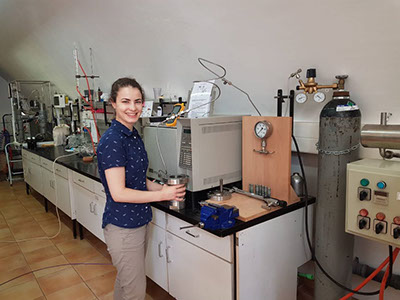
The main goal of this STSM was verification of the work process of the hand-made constructed system for subcritical water extraction which is primarily affordable. In order to secure repeatability and credibility of results, it was necessary to compare the results of this handmade extraction system’s application with an extraction system which was bought from the official manufacturer. Therefore, a comparison of results of extraction of herbal material in terms of differences in the extraction efficiency, the quality of obtained extracts (chemical composition) and their biological activity was conducted. Also, operational parameters of the subcritical system were monitored in order to analyse critical points of the handmade subcritical system.
Important part of this STSM was acquisition and exchange of knowledge and skills in construction of contemporary extraction/separation system. Additionally, a very significant and positive outcome of this STSM was reinforcing my collaboration with Dr Jokic and making new connections and friendships in the scientific community. Also, future joint work will continue on improving the working process of the handmade subcritical water extraction system and removing determined disadvantages of the system. Results obtained by the proposed STSM will be disseminated as a result of PortASAP COST Action through presentation on scientific conferences and publications in peer-reviewed scientific journals.
_________________________________________________________________________________________________________________________________
Prof Nikola Sakač - Estradiol detection in water by Quartz-Crystal Microbalance (QCM) and optical based biosensors (Phase 1)
Host: Università Federico II - Dipartimento di Fisica "Ettore Pancini", Italy [13th - 29th of September, 2018]
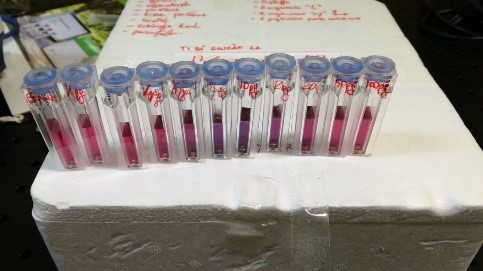
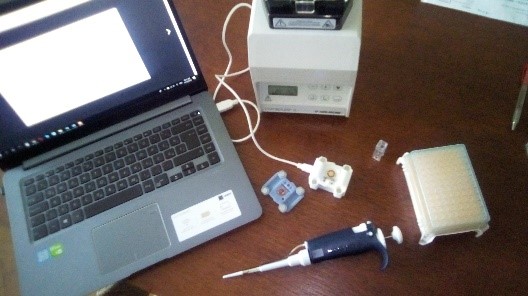
1) Optical biosensor research results:
- Antibodies were successfully immobilized on the golden nanoparticle (GNP) surface which enabled the further investigation.
- UV-VIS and Dynamic Light Scattering confirmed the formation of Ab-GNP-E2 aggregate which was the main goal to achieve and the hypothesis was approved.
- The behaviour of the biosensor at different E2 concentrations was successfully tested in the pg/mL concentrations of E2.
2) Quartz-Crystal Microbalance-(QCM) research results:
- Antibodies were successfully immobilized on the sensor surface which enabled the further investigation.
- Secondary antibodies together with GNPs were successfully employed as a ballast for determination of E2 at low level.
- The behaviour of the biosensor was observed at ng/mL E2 concentration and sensogram revealed a successful determination of low E2 concentration.
_________________________________________________________________________________________________________________________________
Dr Sara Abalde-Cela - Developing a machine learning tool for deconvolution of SERS spectra
Host: Dr Tilman Sauerwald, Saarland University, Lab for Measurement Technology, Germany [23th - 29th of September 2018]
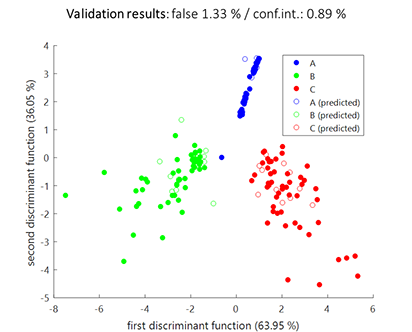
Figure 1: LDA results for SERS barcode discrimination (A, B and C) with 80% of data used for model training and 20 % of data used for prediction.
Dr Sara Abalde-Cela spent a week at the Lab of Measurement Technology (LMT) in Saarbrücken (Germany) to implement a software analysis tool to solve complex spectra acquisitions in a microfluidic device. This STSM was hosted by Dr Tilman Sauerwald, and the in-house developed software DAV3E was introduced to the hosted researcher by the PhD student Manuel Bastuck. Sara Abalde-Cela (PhD) holds a PhD in nanotechnology (2013), in which she developed plasmonic sensing materials for analytical applications based on surface-enhanced Raman scattering (SERS) spectroscopy. Later, she joined the University of Cambridge (UK) as a postdoc and she specialised in microfluidics and biotechnology. She is currently a Research Fellow at INL in where she develops microfluidic portable plasmonic sensors for cancer diagnosis, based on SERS spectroscopy. SERS spectroscopy is one of the most ultrasensitive tools for analytical chemistry. It is remarkable the multiplexing ability of SERS, and thus the acquisition of multiple data needs to be handled in an extremely efficient way for data analysis. DAV3E software developed by members of the LMT was in this case applied for the generation of a model that can process complex mixtures of SERS spectra. These SERS spectra report on the presence or absence of specific membrane receptors of cancer molecules, which are currently being analysed in a microfluidics system at Dr Abalde-Cela´s home institution, INL (Portugal). So far, the results obtained after analysing several thousands of spectra are promising to be implemented in the real-time analysis of cancer cells in circulation. Furthermore, this STSM allowed the establishment of additional collaboration between both research groups, the LMT and the Medical Devices group. Currently, researchers from both institutions are applying this software for the discrimination of cancer, peripheral and normal tissue of liver samples of cancer patients.
_________________________________________________________________________________________________________________________________
Mr Oliver Brieger - Design and characterization of a gas sensor pre-concentrator micro system
Host: Dr Lorena Diéguez, nternational Iberian Nanotechnology Laboratory, Braga, Portugal [20th January - 2nd February 2019]
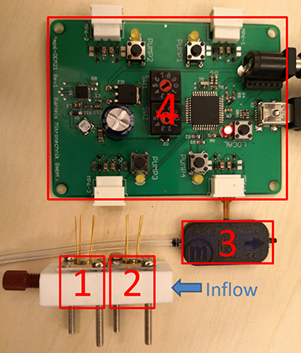
Figure 1: Complete Setup (1) Gas sensor (GGS 1530 UST Umweltsensortechnik), (2) PC, (3) Micro pump (mp6-gas by Bartels Mikrotechnik GmbH), (4) Evaluation board for up to 4 micro pumps.
As nowadays people spend most of the time indoors, online monitoring of indoor air quality will become an important part of their lives, especially in automated air conditioning units [1]. For some hazardous VOCs (e.g. Benzene) guideline threshold values are in the ppb range [2]. Yet there are no low-cost measuring tools available in the sector that provide this resolution. Even optimised MOS gas sensors have a limit of detection of a few ppb when used in a realistic gas matrix [3].
During the STSM, a metal organic framework (MOF) was dispensed on a commercially available micro-hotplate with a platinum heater (PT10) and will be used as pre-concentrator (PC). A chamber to couple the PC and a gas sensor with a gas flow – driven by a micropump – was designed. The chamber geometrics were implemented in COMSOL Multiphysics. The gas and heat transport in the desorption phase of the PC was simulated. Several chambers made of PTFE were manufactured with the CNC machine.
The STSM was supervised by Lorena Diéguez with the International Iberian Nanotechnology Laboratory. The STSM will be concluded with measurements at the Lab for Measurement Technology under the supervision of Tilman Sauerwald.
[1] A. Schütze, T. Baur, M. Leidinger, W. Reimringer, R. Jung, T. Conrad, T. Sauerwald, Highly Sensitive and Selective VOC Sensor Systems Based on Semiconductor Gas Sensors: How to?, Environments. 4 (2017) 20. doi:10.3390/environments4010020.
[2] WHO Regional Office for Europe, WHO guidelines for indoor air quality: selected pollutants, Copenhagen, 2010. doi:10.1186/2041-1480-2-S2-I1.
[3] T. Sauerwald, T. Baur, M. Leidinger, W. Reimringer, L. Spinelle, M. Gerboles, G. Kok, A. Schütze, Highly sensitive benzene detection with metal oxide semiconductor gas sensors – An inter-laboratory comparison, J. Sensors Sens. Syst. 7 (2018). doi:10.5194/jsss-7-235-2018.
__________________________________________________________________________________________________________________________________
Dr Jakub Sandak - Development of the low-cost capillary electrophoresis instrumentation for assessment of the rainwater
Host: Dr Jelena Gorbatsova, Tallinn University of Technology, Estonia [03- 09th of February 2019]
The Short Term Scientific Mission took place at Tallinn University of Technology under supervision of Dr. Jelena Gorbatsova between February 3 to February 9, 2019. The objective of the mission was to learn theoretical and practical knowledge necessary for properly implement capillary electrophoresis (CE) in different application fields, with a special emphasize on the determination of the rain water chemical composition. For that reason, a prototype instrument developed by the group of Dr. Jelena Gorbatsova (left picture above) has been adopted for manual assessment of water collected in diverse locations (picture on the right).
The list of activities performed included preparation of hardware and consumables (capillary), development of the new protocol for sample collections and preparation, procedure for the CE measurement assuming diverse techniques for the sample injection, interpretation of electropherograms, and qualitative/quantitative determination of ions present in water samples. My training included also presentation of alternative to CE analytical instruments (HPLC, GC-MS), as well as different CE detectors (fluorescence, C4D). An important part of the STSM was to collect series of movies presenting sequence of procedures when preparing and using capillary electrophoresis system, with a special focus on the low-cost, portable prototype as developed at Technical University of Tallinn.
The work performed during my mission was reported in the special issue of the Environmental Engineering journal [1] (https://hrcak.srce.hr/222951).
Summarizing, my STSM was very inspiring experience when I was able to learn subjects far from my up-to-date experiences, opening new research directions. The instrument proof to be suitable for implementation in the ongoing research projects I am involved. I am intending to upgrade the current set-up by automizing routine measurement procedures. Furthermore, I am looking forward to reinforce the recent collaboration with Dr. Jelena Gorbatsova, Piret Saar-Reismaa, and Prof. Mihkel Kaljurand by organizing further exchanges and application to common research proposals.
[1] J. Sandak, J. Gorbatsova, P. Saar-Reismaa; M. Kaljurand, Low-cost Capillary Electrophoresis Instrumentation for Assessment of Rain water Ionic Composition, Environmental Engineering - Inženjerstvo okoliša, Vol. 6 No. 1, 2019. DOI: 10.37023/ee.6.1.5. Download article.
__________________________________________________________________________________________________________________________________
Ms Alexandra Teixeira - Synthesis of SERS encoded nanoparicles for the real time detection of circulating tumor cells in a microfluidics platform
Host: Prof Isabel Pastoriza-Santis, Universidade de Vigo, Departamento de Química Física, Spain [24th February - 30th of March 2019]
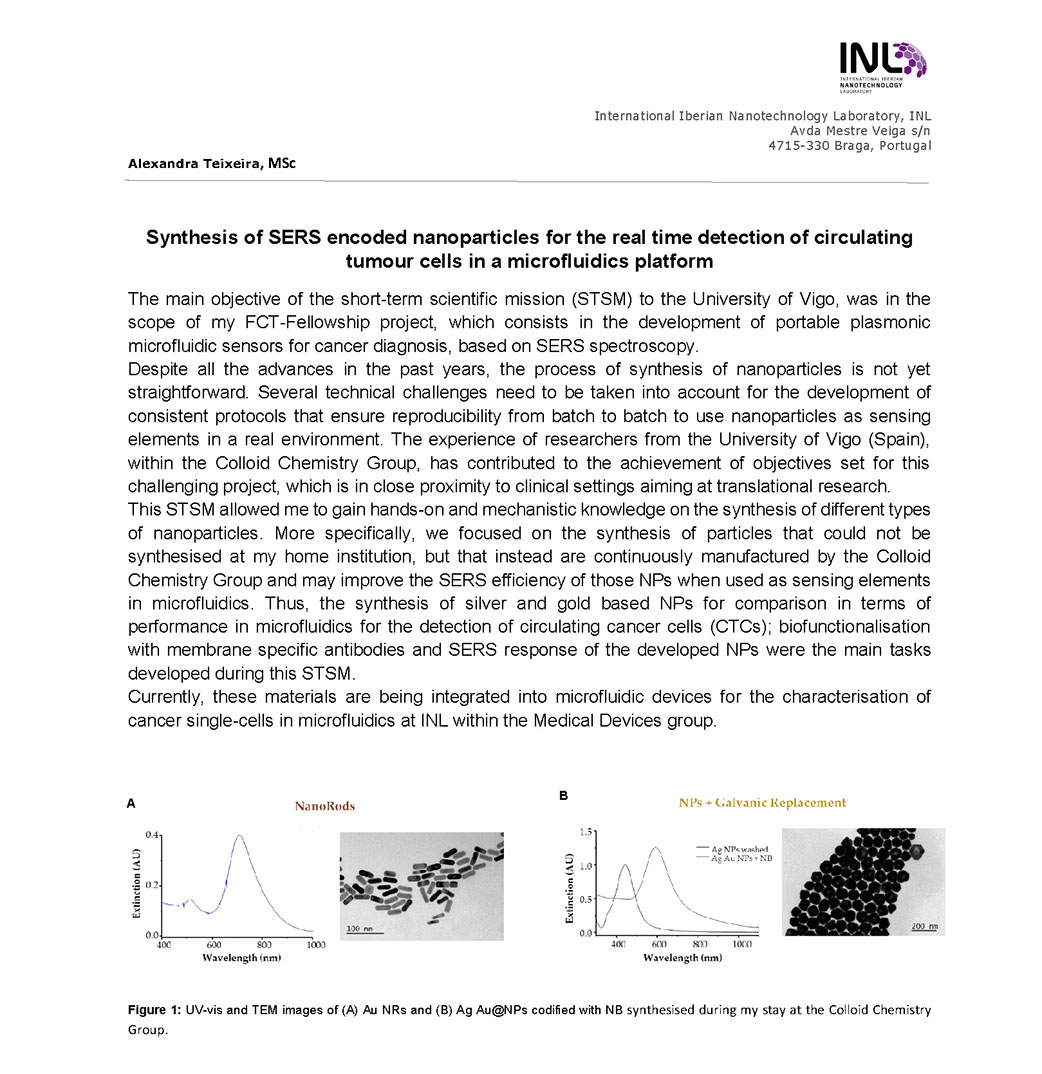
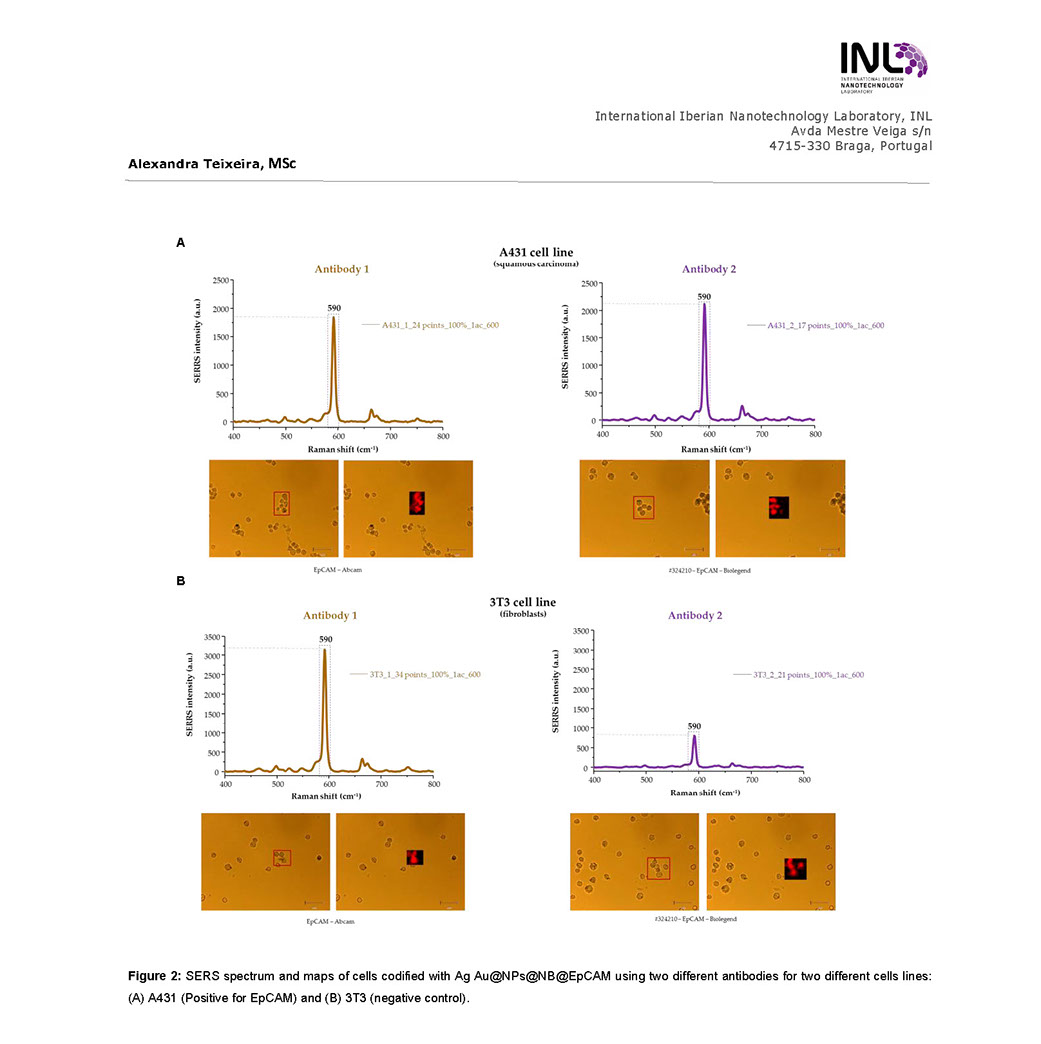
__________________________________________________________________________________________________________________________________
Ms Lorena Franco Martínez - Preliminary Evaluation of a Possible Point-of-Care Assay for Measurement of CRP in Pigs
Host: Dr Laura Anfossi, University of Turin, Italy [16 - 31st of March 2019]
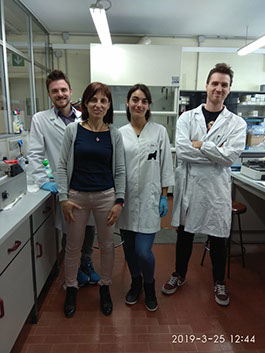
The STSM of PhD student Lorena Franco Martínez took place at Department of Chemistry - University of Turin, Italy, from 16 -31st of March 2019, under the supervision of Prof. Laura Anfossi, principal researcher of the laboratory.
The objective of this STSM was to perform the initial steps for the development of point-of-care tests in animals. During the stay, initial tests were performed including optimisation of type and concentrations of antibodies and different reagents, and the selection of best-fitting materials.
Overall, the stay was very successful in terms of establishing collaboration, gaining knowledge and data generation. Furthermore, both groups are looking forward to future collaborations for the development of novel real-time and point-of-care testing devices and their application in clinical studies.
__________________________________________________________________________________________________________________________________
Mr Sebastian Höfner - Implementation of „Internet of Things" services for inexpensive and portable sensor systems
Host: Prof Kostas Karatzas, School of Mechanical Engineering, Aristotle University of Thessaloniki, Greece [11- 16th of March 2019]
During the STSM it was demonstrated how to use the “Internet of Things” services “ThingSpeak” and “Blynk”, to collect and store sensor data, download and display them on custom websites using the programming language JavaScript. It was also shown how visualize the data on maps with services from “Google Maps” and “OpenStreetMaps”. Moreover, the Environmental Informatics Research Group provided information on the methods and tools used for data analytics and modelling in the atmospheric environment field with emphasis on AQ sensor data
The PhD students of the EIRG received information on how to use the IoT service “ThingSpeak” and its possibilities of data visualization using the normal web interface, and also the smartphone app
We implemented a way to display sensor data on a map on the internet, using “OpenStreetMap”. The sensor data can now be fetched from a server and visualized on a map. Markers show the position of the sensor node in Thessaloniki. By clicking on the marker, you get additional information about the current sensor values at this node. This can be seen in the figure.
_________________________________________________________________________________________________________________________________
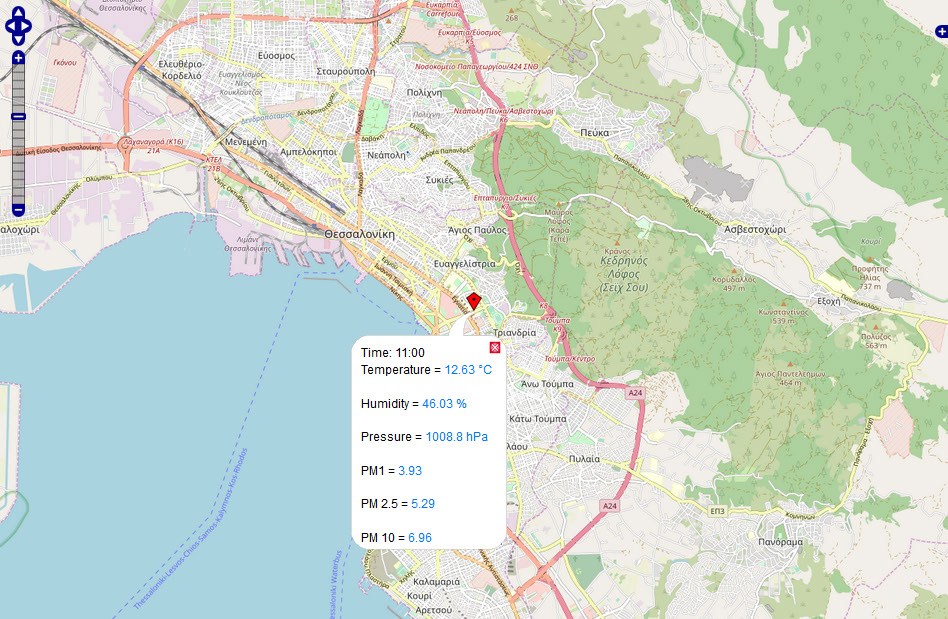
Ms Katrina Laganovska - Testing and validation of an open source mini-spectrophotometer
Host: Dr Mercedes Vazquez, School of Chemical Sciences National Centre for Sensor Research Dublin City University, Ireland [18 - 29th of March 2019]
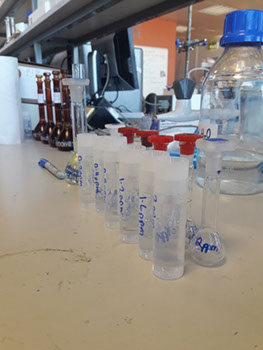
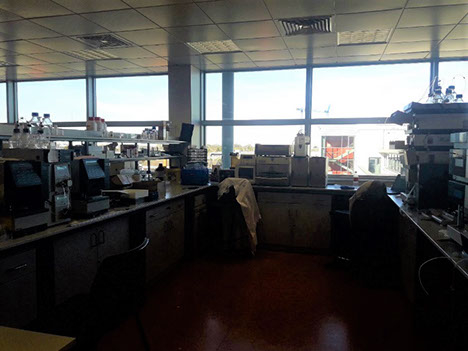
Figure 1: Samples containing phosphates (used for futher testing the device after the first calibration measurements)
Figure 2: The DCU laboratory where sample preparation and measurements took place.
A total of two weeks were spent in the Dublin City University in Ireland. The general purpose of the STSM was to test, optimize and validate a low-cost portable mini spectrophotometer developed at the home institution. Multiple colorimetric method measurements used in analytical chemistry were made and the device was calibrated against a commercial spectrometer.
During the first week, for calibration purposes, a solution of vitamin B12 was prepared at 6 concentrations and measured 3 times as a series, 3 days in a row in order to gain statistics. The spectrometer was calibrated successfully and on the second week a colorimetric method for the detection of phosphates was tested on both the mini-spectrophotometer and the commercial one. The obtained results were satisfying and in fact the mini spectrometer even performed slightly better than the commercial one although both showed very similar results. The acquired information will be used in a future publication.
The overall experience was very positive and helped move the mini-spectrophotometer project forward at a greater speed. The time put in and advice given by the host Mercedes Vázquez and her student Kirsty Mc Donnell is greatly appreciated and has helped improving the device significantly. I look forward to future collaborations and projects.
__________________________________________________________________________________________________________________________________
Dr Bartolomeo Della Ventura - Estradiol detection in water by Quartz-Crystal Microbalance (QCM) and optical based biosensors (Phase 2)
Host: Dr Nikola Sakac, Faculty of Geotechnical Engineering, University of Zagreb, Croatia [31 March - 06th of March 2019]
The phase 2 STSM was performed in Varazdin, Croatia (Host institution) and consisted in the next steps in developing of E2 estradiol sensors. Setting up of the protocol for the measurement campaign was done by assembling the measurement equipment and, in particular, UV-VIS spectrometer was calibrated successfully to monitor the wavelength shifts of the LSPR (Localized surface plasmon resonance) peaks due to interactions of the functionalized gold nanoparticles with E2 antigen. Moreover, the parameters of the refrigerated centrifuge were optimized to reach the best yield in the recovery of gold nanoparticles.
As next step, a complex matrix as the tap water was used as model sample to verify the interferences in the detection of E2. Since the gold nanoparticles are more susceptible to salts to form aggregates even without analytes, it was an important test to understand what was the right volume of tap water to add to gold nanoparticles solution in order to avoid interferences or formation of aggregates. As result we found that 10 µL of tap water are the maximum volume to add in 1 mL of gold nanoparticles. Eventually we can affirm that the LOD (limit of detection) achieved in the detection of E2 was not influenced by the dilution we need to do when tap water is used. The behaviour of the biosensor at different E2 concentrations in tap water was successfully tested in the pg/mL concentrations of E2. Even if the LOD is satisfactory, to improve it we tried to synthetize magnetic gold core shell nanoparticles as a method to pre-concentrate E2 to analyse. The preliminary results confirm the possibility to do it but it is necessary to work on more time.
__________________________________________________________________________________________________________________________________
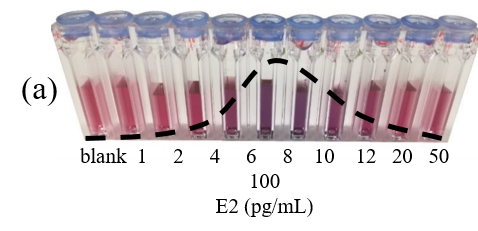
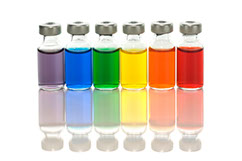
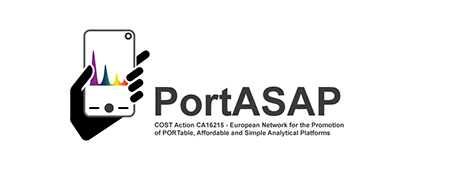
.png?crc=4271212285)



